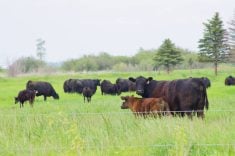The ongoing outbreak of avian influenza in North America has featured a number of unusual developments.
Historically, wild birds have been the reservoir for influenza viruses with occasional spillover into other species.
The virus circulates in flocks of wild waterfowl, such as ducks. It is in these populations that the virus mutates and otherwise mixes up its genetic material, creating new opportunities to infect different hosts.
Read Also

Canada told trade crisis solutions in its hands
Canadians and Canadian exporters need to accept that the old rules of trade are over, and open access to the U.S. market may also be over, says the chief financial correspondent for CTV News.
These strains have been classified as low pathogenic, based on their effects on domestic poultry. When these low pathogenic strains spill over into other species, such as domestic poultry, and mammals, such as dogs, horses, people and cats, the resultant clinical disease tends to be mild respiratory infections.
What has changed is the recent emergence in the last few years of a highly pathogenic avian influenza strain. This classification is based on its ability to cause severe disease and high death rates in domestic birds such as chickens and turkeys.
Genetic detective work has linked the current strain in North America back to a spillover to domestic birds in China during the mid-1990s. It spread among wild birds throughout Asia and Europe, and then the theory is that migratory birds transferred the virus to North America from Northern Europe in the early 2020s.
Wild birds have died in unprecedented numbers from this virus.
The range of species is staggering, with more than 500 bird species identified so far. I recently autopsied a red-tailed hawk that had a large volume of fluid around its heart due to the viral infection, killing this otherwise healthy predator in a quick and brutal fashion.
The availability of infected bird carcasses has also contributed to spillover into mammals. Cases have been described in more than 60 mammalian species. This includes wild mammals, especially carnivores such as skunks, foxes and even seals and whales.
A notable example is a 2022 mortality event in the St. Lawrence Estuary of Quebec where 15 harbour and grey seals developed fatal brain infections as a result of the virus.
In this case, infected birds were identified nearby and thought to be the source of infection through direct consumption of carcasses (grey seals) or through exposure to virus-contaminated environmental sources (harbour seals, which don’t typically eat birds).
Besides the sheer diversity of animals that this virus infects, it is also causing unusual disease presentations.
Influenza is traditionally a disease of the upper and lower respiratory system — the nasal cavities, airways (trachea and bronchi) and of course, the lungs. It is these deep, severe lung infections that result in the devastating pneumonia that often kills animals directly or predisposes them to secondary infections.
What has alarmed the scientific community is how this virus behaves in mammals.
It primarily targets the brain rather than the respiratory system.
Infection and swelling in the brain causes the animals to behave abnormally and die quickly.
There is often also severe tissue death in a wide range of organs, such as the heart, liver, spleen and adrenal glands. And it happens so quickly, the body’s immune system doesn’t have time to respond to the infection.
The last skunk with this disease that I looked at gave me the impression that a virus bomb had gone off in its organs.
And let’s not forget that large amounts of virus in the environment and infected wild animal carcasses has likely contributed to infection in domestic animals.
The infection of domestic poultry flocks has had enormous impacts on the industry. The disease is serious in these birds, leading to high mortality.
However, it also can result in the culling of flocks where individuals test positive.
As well, the virus has jumped into dairy cattle in the United States, of all things. It is a species jump that seemed unlikely and challenging to predict.
Avian influenza can also infect people and cause severe disease. It seems to not be easily transmitted between animals to people. The real concern is that this strain of the virus will gain the ability to spread readily between people, leading to another pandemic event.
The situation continues to evolve and change, but what remains constant is the need for careful attention to hygiene and biosecurity.
Limit contact wherever possible between domestic animals and wild birds, including farm cats and dogs. Sick or dead wildlife can be reported to provincial wildlife authorities and submitted for diagnostic testing to the Canadian Wildlife Health Co-operative.
Dr. Jamie Rothenburger, DVM, MVetSc, PhD, DACVP, is a veterinarian who practices pathology and is an assistant professor at the University of Calgary’s Faculty of Veterinary Medicine. X: @JRothenburger















